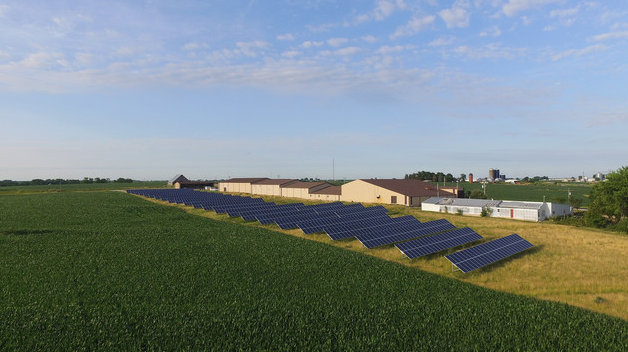Net metering seems to be slowly losing its political favor. We turn to Iowa today where the state’s Utilities Board accepted a proposed rule change from Alliant Energy would place an arbitrary cap on net metering in order to curtail the number of residents able to make the move.
Why the change?
Under the current rules, net metering has a natural cap of a customer’s total annual energy usage — how many kilowatt-hours (kWh) of electricity are used in a year.
According to the Gazette, the utilities board asked Iowa’s utilities last summer to develop net metering pilot projects, but “for the purpose of expanding renewable distributed generation in Iowa.” According to the board, the aim was to clarify Iowa’s net metering rules and encourage development of more solar and wind projects. The Gazette doesn’t mince words about the likely outcome of these new rules and how its editorial board feels about them.
Under the new rules, the net metering cap for residential and small business customers will be based on a percentage of the customer’s annual energy usage. We’ve calculated that the change will reduce available net metering by 62 percent for residential customers and by 68 percent for small business customers. Solar installations larger than the cap won’t make financial sense.
Here’s an example: Under the current rules a typical Iowa household using about 12,000 kWh of electricity per year could purchase a 10 kW solar installation that would save the family $1,560 in the first year and pay for itself completely within 10-11 years. Under the new rules, only 3.43 kW of the same 10 kW installation would be eligible for net metering, and would save the same family only $979 per year, taking 18-19 years to pay for itself.
It gets worse. If a customer builds a smaller system that matches the new net-metering caps, that customer still has to pay all of the same fixed costs, including the grid interconnection, feasibility study, and more. The smaller the system, the higher the cost per watt. Small solar systems simply hit a point where they are not financially viable. On top of that, Alliant Energy increased the fees for its solar interconnection process from $50 to $425 or more for a typical residential project.
— Solar Builder magazine
[source: http://solarbuildermag.com/news/iowa-utilities-board-accepts-proposal-for-net-metering-cap/]


Leave a Reply
You must be logged in to post a comment.